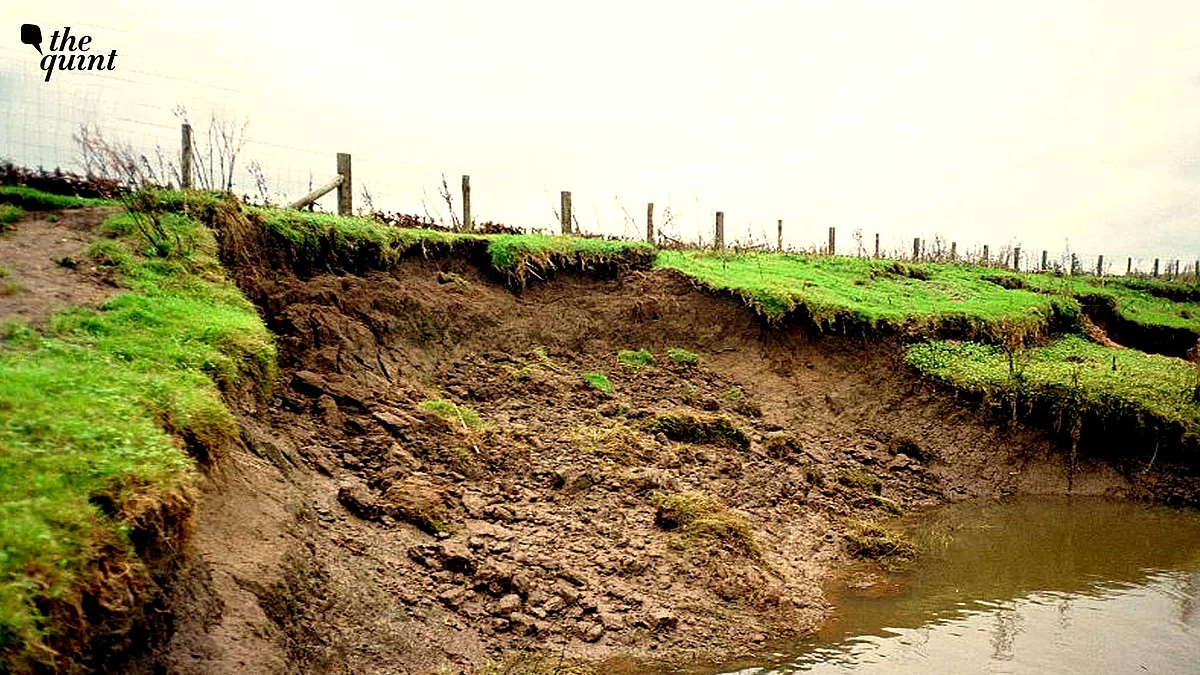
Floods, Erosion, and Evictions: Assam’s Endless Displacement Crisis
These evictions, claims, and counter-claims over land indicate a deeper land resource crisis in Assam.

advertisement
The Assam government has been on a spree to recklessly demolish homes and evict families from agricultural land. Most often it is the Muslims of Bengali ethnicity in lower Assam districts that are on the target of evictions. The evictions in Hasilabeel village of Goalpara district, conducted by the administration on 16 June, is no exception.
More than 650 families were made homeless and hundreds of children their lost their schools with five government schools being part of the dwellings marked for demolition. The displaced families say they had moved to the present site in 1997 from villages near Naranarayan Setu, a rail and road bridge over the Brahmaputra River connecting Goalpara and Bongaigaon districts.
Displacement on Displacement
Displacement of farming communities across Assam—particularly of those belonging to Muslims of Bengali ethnicity—due to eviction drives from land claimed as government land and other unauthorised holding, has happened rampantly in the last few years.
Assam has lost more than 4,000 square kilometres of area due to floods and river erosion, causing displacement of an estimated 5 lakh families. Displacing people from their farms and homesteads due to government and private projects is an exercise that is unnecessary.
One of the avoidable administrative actions that led to the killing of two persons include the eviction of more than 2,000 Muslim families of Bengali ethnicity from their homes and fields in Gorukhuti, Darrang district in 2021.
The Himanta Biswa Sarma government has established an ‘agricultural project’ by displacing these farmers. As per figures provided by the government in the Assam Assembly, the government invested Rs 16.1 crore and has been able to earn an income of Rs 1.51 crore. Without doubt, the farmers cultivating those lands would have added more income to the state domestic product.
Long History of Uprooting
Displaced farmers have been cultivating these lands for more than four decades, after being displaced due to river erosion in their native Barpeta district. The farmers say they have been repeatedly petitioning the administration over the past decades to regularise their holdings but to no avail.
Even though some families have been informally given alternative lands and homesteads on directions from the Gauhati High Court, about 50 km away in Dalgoan revenue circle, the new site is dangerously close to the Brahmaputra River with flood waters precariously coming close to the settlements during floods this May-June.
Moreover, without titles to the land now they cultivate, these families are at risk of eviction again in the future. The socio-political climate in the state is such that it is very easy for politicians and the media to blame ‘Bangladeshi encroachers’ for cultivating government lands.
Kamrup’s Kachutali Evictions
Another major eviction happened in Kachutali of Kamrup district’s Sonapur area. In September 2024, more than 1,200 Muslim families of Bengali ethnicity from different locations were evicted from their homes and fields.
The violent eviction drive, that included open firing by the law enforcement authorities, left two persons dead and several injured. The displaced families are presently living in the same area in makeshift homes built on muddy soil, as they have nowhere to go.
The reason behind this action, as stated by the administration, is that these families were residing and cultivating land falling within a tribal block. The Assam Land and Revenue Regulation Act of 1886 restricts land ownership to tribals, preventing non-tribal individuals or entities from acquiring or possessing land within these protected areas.
Erosion Victims vs Tribal Land Law
The evicted families had lost their original lands in Morigaon and Barpeta districts due to river erosion and moved to the present location. They had bought these lands from tribals in the 1980s before the area was declared a tribal block.
A displaced young man told The Quint that his forefathers had bought the land from tribals who were not cultivating the land, but now their descendants are coming to demand money. He added, "When we didn’t give them any money, they complained to the administration and have demanded the lands be restored to them’.
Tribal communities in the area have been demanding that the government should evict them, but the administration always fails to evict them, despite several court orders. While Bengali ethnicity farmers are accused as ‘land hungry’ Muslims, no such accusations are made against the industries operating in tribal blocks for years.
Not Just Migration, But a Climate Crisis
These evictions, claims, and counter-claims over land indicate a deeper land resource crisis in Assam. It is not so much rooted in the diverse communities competing for resources in the state, but rather in the massive loss of lands and incomes to river erosion and frequently occurring floods.
According to the Assam government, 31.05 lakh hectares of the state against a total area of 78.523 lakh hectares (39.58 percent of the total land area) is flood prone. The state lost 4.27 lakh hectares to river erosion since 1950 (7.40 percent of area of the state). River erosion and floods cause an average of Rs 200 crore loss to the state annually. Most of the land lost is the riverine char lands (riverbank land and islands) that are mostly cultivated by Bengali Muslims.
With China planning to build a dam across the Yarlung Tsangpo (Brahmaputra), this crisis gets much more urgent to deal with for the government and communities living and cultivating the char lands. Will Assam and India rise to the challenge, or continue to endure rising poverty, declining incomes, and climate crisis?
(Ravi Hemadri is an activist and Director of the Delhi-based Development and Justice Initiative. Views are personal. The views expressed above are the author’s own. The Quint neither endorses nor is responsible for them.)
- Access to all paywalled content on site
- Ad-free experience across The Quint
- Early previews of our Special Projects
Published: undefined